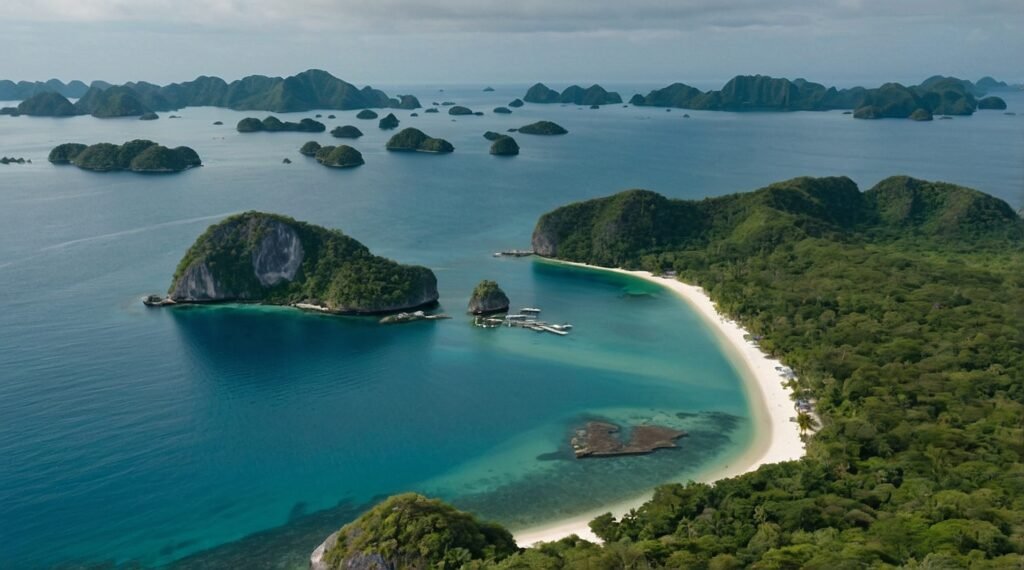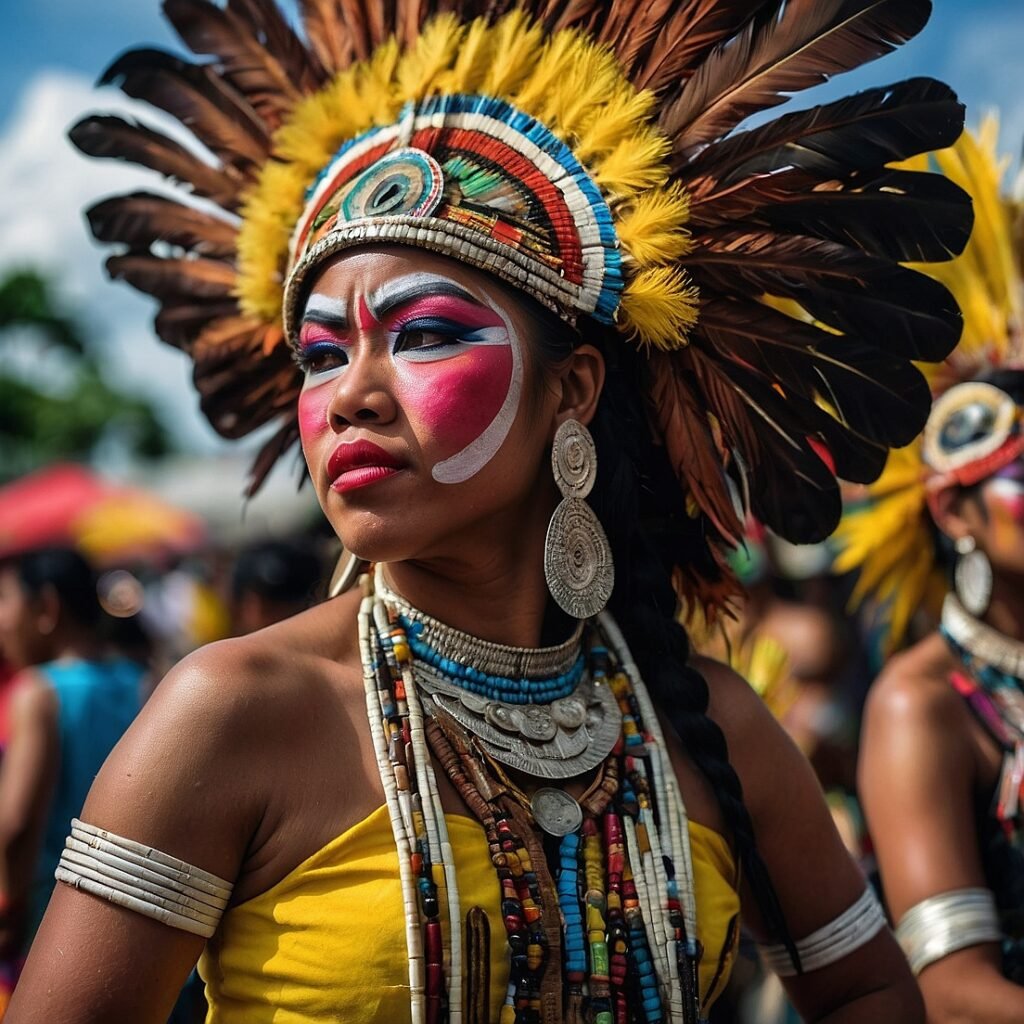The Philippine Archipelago, a Southeast Asian nation comprising over 7,000 islands, stands as a testament to geological diversity and cultural richness. Situated in the western Pacific Ocean, this island nation spans an area of approximately 300,000 square kilometers, making it one of the largest archipelagic states in the world. The Philippines is bounded by the Philippine Sea to the east, the South China Sea to the west and north, and the Celebes Sea to the south. This strategic location has played a crucial role in shaping the country’s history, economy, and cultural landscape. The archipelago’s unique geography, characterized by its numerous islands, has given rise to a diverse array of ecosystems, from tropical rainforests to coral reefs, making it a hotspot for biodiversity. Understanding the complexities of this island nation requires an exploration of its geographical features, historical context, and the challenges and opportunities presented by its archipelagic nature.
Geographical Overview of the Philippines
Location and Composition
The Philippine Archipelago is located between 116° 40′ and 126° 34′ E longitude, and 4° 40′ and 21° 10′ N latitude. This vast expanse of islands is traditionally divided into three main geographical regions: Luzon, Visayas, and Mindanao. Luzon, the largest and northernmost island group, includes the national capital region of Metro Manila. The Visayas, situated in the central part of the country, comprises several smaller islands, including Cebu, Bohol, and Panay. Mindanao, the second-largest island, forms the southernmost part of the archipelago. Together, these regions encompass a total land area of 300,000 square kilometers, stretching over 1,850 kilometers from north to south.
Island Classification
The islands of the Philippines vary greatly in size and importance. While the exact number of islands is often debated, it is generally accepted that there are between 7,100 to 7,640 islands, depending on tidal levels and the criteria used for classification. Of these, only about 2,000 are inhabited, and nearly 5,000 remain unnamed on most maps. The largest islands are:
- Luzon (109,965 km²)
- Mindanao (97,530 km²)
- Samar (13,080 km²)
- Negros (13,074 km²)
- Palawan (12,189 km²)
| Island Classification | Number of Islands | Percentage of Total |
|---|---|---|
| Major Islands | 11 | 0.15% |
| Inhabited Islands | ~2,000 | 26.18% |
| Uninhabited Islands | ~5,640 | 73.67% |
| Total | ~7,640 | 100% |
Geological Formation and Tectonic Setting
The Philippine Mobile Belt
The Philippine Archipelago owes its existence to complex geological processes occurring along the Philippine Mobile Belt. This tectonic feature is situated at the convergence of several tectonic plates, primarily the Philippine Sea Plate, the Eurasian Plate, and the Indo-Australian Plate. The interactions between these plates have shaped the archipelago over millions of years, resulting in the diverse landscape we see today. The Mobile Belt is characterized by intense seismic and volcanic activity, which continues to mold the islands’ topography.
Volcanic Arc System
One of the most prominent geological features of the Philippines is its volcanic arc system. The country is part of the Pacific Ring of Fire, a region known for its high concentration of active volcanoes and frequent earthquakes. There are approximately 300 volcanoes in the Philippines, of which 24 are considered active. Notable among these are Mount Mayon in Albay, known for its near-perfect conical shape, and Taal Volcano in Batangas, one of the world’s smallest active volcanoes. These volcanic systems have played a crucial role in forming the archipelago’s fertile soils and unique landscapes.
Climate and Weather Patterns
Tropical Maritime Climate
The Philippine Archipelago experiences a tropical maritime climate, characterized by relatively high temperatures, high humidity, and abundant rainfall. The country’s climate is primarily influenced by the northeast and southwest monsoons, known locally as “Amihan” and “Habagat” respectively. These monsoon systems, along with the intermonsoon periods, create distinct seasonal patterns across the archipelago.
Temperature and Rainfall
Average temperatures in the Philippines range from 25°C to 32°C (77°F to 90°F), with little variation throughout the year. However, temperatures can be cooler in mountainous regions and higher in urban areas due to the heat island effect. Rainfall patterns vary significantly across the archipelago, with annual precipitation ranging from 1,000 mm to 4,000 mm, depending on location and topography.
Typhoon Activity
The Philippines is highly susceptible to tropical cyclones, locally known as typhoons. On average, the country experiences about 20 typhoons annually, with approximately 8-9 making landfall. These powerful storms can cause significant damage to infrastructure, agriculture, and communities, particularly in coastal and low-lying areas.
Biodiversity and Ecosystems
Marine Biodiversity
The Philippine Archipelago is renowned for its exceptional marine biodiversity. The country is part of the Coral Triangle, an area recognized as the global center of marine biodiversity. Philippine waters host over 500 species of hard corals, representing more than half of all known coral species worldwide. This rich marine ecosystem supports an incredible array of fish, mollusks, and other marine life, making the Philippines a prime destination for marine research and conservation efforts.
Terrestrial Ecosystems
The archipelago’s terrestrial ecosystems are equally diverse, ranging from lowland rainforests to montane forests and mangrove swamps. These varied habitats support a wide array of flora and fauna, many of which are endemic to the Philippines. The country is home to over 52,177 described species, with more than half being found nowhere else on Earth. This high level of endemism is a result of the archipelago’s isolation and diverse island environments.
Endangered Species and Conservation
Despite its rich biodiversity, the Philippines faces significant conservation challenges. Habitat loss, pollution, and climate change threaten many species with extinction. Some of the most iconic endangered species include:
- Philippine Eagle (Pithecophaga jefferyi)
- Tamaraw (Bubalus mindorensis)
- Philippine Crocodile (Crocodylus mindorensis)
- Visayan Warty Pig (Sus cebifrons)
Conservation efforts are ongoing, with the establishment of protected areas, marine sanctuaries, and wildlife rehabilitation centers across the archipelago.
Historical Context and Cultural Diversity
Pre-colonial Era
The Philippine Archipelago has a rich history dating back thousands of years. Archaeological evidence suggests human habitation as early as 67,000 years ago. Prior to Spanish colonization, the islands were home to various indigenous groups with distinct cultures and social structures. Trade with neighboring regions, including China, India, and the Malay Archipelago, influenced the development of early Philippine societies.
Colonial Period and Independence
The arrival of Ferdinand Magellan in 1521 marked the beginning of Spanish colonial rule, which lasted for over three centuries. This period significantly impacted Philippine culture, introducing Christianity and Spanish influences to the archipelago. Following the Spanish-American War, the Philippines came under American control in 1898. The country gained independence on July 4, 1946, after a brief period of Japanese occupation during World War II.
Cultural Diversity
The archipelagic nature of the Philippines has fostered remarkable cultural diversity. There are over 175 ethnolinguistic groups in the country, each with its own traditions, languages, and customs. This diversity is reflected in the country’s languages, with over 180 individual languages identified, although Filipino and English serve as the official languages. The interplay between indigenous cultures, colonial influences, and modern globalization has created a unique and vibrant Philippine cultural identity.
Economic Landscape of the Archipelago
Key Economic Sectors
The Philippine economy is diverse, with services, industry, and agriculture as the main contributors to GDP. The service sector, including business process outsourcing (BPO) and tourism, has been a significant driver of economic growth in recent years. Agriculture remains important, with the country being a major producer of rice, coconuts, and tropical fruits. The industrial sector, including manufacturing and construction, also plays a crucial role in the economy.
Challenges and Opportunities of an Archipelagic Economy
The archipelagic nature of the Philippines presents both challenges and opportunities for economic development. While the numerous islands offer diverse resources and potential for tourism, they also create logistical challenges for transportation and infrastructure development. The disparity in economic development between urban centers and remote islands remains a significant issue.
Economic Indicators
Here’s a snapshot of key economic indicators for the Philippines:
| Indicator | Value (as of 2023) |
|---|---|
| GDP (nominal) | $402.6 billion |
| GDP per capita | $3,548 |
| GDP growth rate | 5.6% |
| Inflation rate | 6.1% |
| Unemployment rate | 4.3% |
Infrastructure and Connectivity
Transportation Network
Connecting over 7,000 islands poses significant infrastructural challenges. The Philippine transportation network comprises:
- Air Transport: The country has 85 airports, with Ninoy Aquino International Airport in Manila serving as the primary international gateway.
- Sea Transport: With over 1,300 seaports, maritime transport is crucial for inter-island connectivity and international trade.
- Land Transport: Road networks on major islands, supplemented by rail systems in some urban areas, facilitate intra-island travel.
Digital Connectivity
The archipelagic nature of the Philippines has spurred investment in digital infrastructure to bridge geographical gaps. As of 2023, internet penetration stands at 68% of the population, with ongoing efforts to improve connectivity in remote areas through initiatives like the National Broadband Plan.
Environmental Challenges and Conservation Efforts
Climate Change and Natural Disasters
The Philippine Archipelago is particularly vulnerable to the impacts of climate change. Rising sea levels threaten coastal communities, while changing weather patterns affect agricultural productivity. The increased frequency and intensity of natural disasters, including typhoons and earthquakes, pose significant challenges to sustainable development and disaster preparedness.
Deforestation and Biodiversity Loss
Rapid deforestation has been a major environmental concern in the Philippines. Forest cover has decreased from 70% in the early 20th century to approximately 23% in recent years. This loss of habitat has significant implications for biodiversity conservation and ecosystem services.
Conservation Initiatives
Numerous conservation efforts are underway to address these environmental challenges:
- The National Integrated Protected Areas System (NIPAS) Act establishes and manages protected areas across the archipelago.
- Marine Protected Areas (MPAs) aim to conserve coral reefs and marine biodiversity.
- Reforestation programs, such as the National Greening Program, seek to restore forest cover and protect watersheds.
Tourism in the Philippine Archipelago
Popular Destinations
The Philippines’ diverse landscapes and rich cultural heritage make it an attractive tourist destination. Some popular tourist spots include:
- Boracay Island: Known for its pristine white sand beaches
- Palawan: Home to the Puerto Princesa Underground River and El Nido’s limestone cliffs
- Bohol: Famous for the Chocolate Hills and tarsier sanctuaries
- Cebu: Offering a mix of historical sites and beautiful beaches
Tourism Statistics
Tourism is a significant contributor to the Philippine economy. Here’s an overview of recent tourism statistics:
| Year | International Visitors | Tourism Revenue (USD) |
|---|---|---|
| 2019 | 8.26 million | 9.31 billion |
| 2020 | 1.48 million | 1.69 billion |
| 2021 | 163,879 | 0.23 billion |
| 2022 | 2.65 million | 3.68 billion |
Note: The significant drop in 2020-2021 was due to the global COVID-19 pandemic.
Future Prospects and Challenges
Sustainable Development Goals
The Philippine government has aligned its development plans with the United Nations Sustainable Development Goals (SDGs). Key focus areas include poverty reduction, quality education, and climate action. The archipelagic nature of the country presents unique challenges in achieving these goals, particularly in ensuring equitable development across all islands.
Balancing Development and Conservation
As the Philippines continues to develop, balancing economic growth with environmental conservation remains a critical challenge. Sustainable tourism, responsible resource management, and green energy initiatives are some of the strategies being employed to address this balance.
Geopolitical Considerations
The strategic location of the Philippine Archipelago in Southeast Asia places it at the center of various geopolitical interests. Managing territorial disputes in the South China Sea while maintaining relationships with regional and global powers will be crucial for the country’s future stability and development.
Conclusion
The Philippine Archipelago, with its over 7,000 islands, stands as a unique and complex nation. Its geological formation, rich biodiversity, cultural diversity, and economic potential make it a subject of fascination and study. While the archipelagic nature presents numerous challenges in terms of connectivity, environmental management, and equitable development, it also offers unparalleled opportunities in sectors such as tourism, marine resources, and biodiversity research.
As the Philippines navigates the 21st century, the interplay between its natural environment, cultural heritage, and development aspirations will continue to shape its trajectory. The nation’s ability to harness its archipelagic advantages while addressing its inherent challenges will be crucial in determining its future on the global stage. Understanding and appreciating the complexities of this island nation is essential not only for those interested in the Philippines but also for gaining insights into the broader dynamics of archipelagic states in an increasingly interconnected world.
Disclaimer: This blog post is based on research and publicly available information as of April 2024. While efforts have been made to ensure accuracy, some data may be subject to change. Readers are encouraged to verify current information from official sources. If you notice any inaccuracies, please report them so we can correct them promptly.




